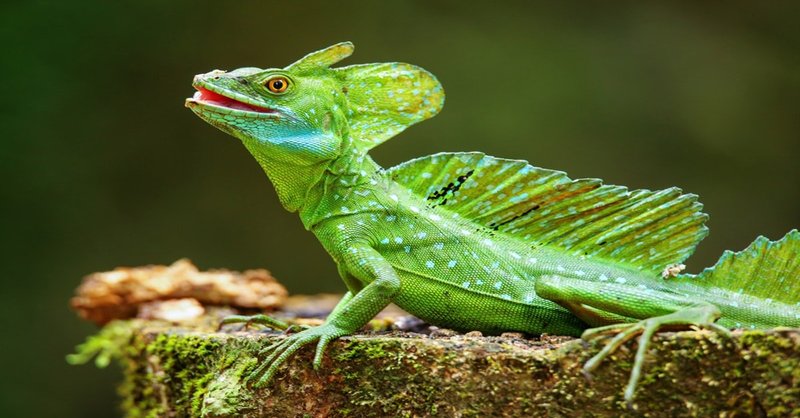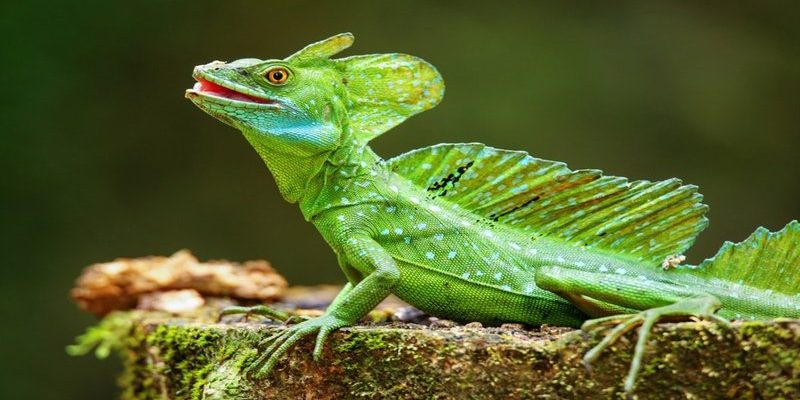
In a way, the basilisk lizard is a perfect example of how amazing nature can be and how fragile it is at the same time. Imagine a canary in a coal mine; when it shows signs of distress, it’s a warning sign for the rest of its environment. The basilisk lizard, found mainly in Central and South America, serves a similar role. Its declining populations may indicate larger environmental issues. So, let’s dive into the current status of the basilisk lizard, what threatens it, and what’s being done to help.
What is the Status of the Basilisk Lizard?
The basilisk lizard, particularly the Green Basilisk (*Basiliscus plumifrons*), is not currently listed as endangered on a global scale. However, its populations are declining in certain areas due to habitat loss and environmental changes. The IUCN Red List, which assesses species’ conservation status, classifies some species of basilisk as “Least Concern,” indicating they are not at immediate risk. But don’t let the name fool you; “Least Concern” does not mean they are thriving everywhere.
This classification can be misleading. In some regions, especially where deforestation is rampant, the basilisk lizard struggles to survive. It’s essential to understand that “least concern” doesn’t guarantee safety. For example, in specific local habitats devastated by human activities, these creatures may be facing critical threats, which could push them closer to endangerment if trends continue.
What Threatens the Basilisk Lizard?
Honestly, the main threats to the basilisk lizard are pretty common for many wildlife species today. Here are a few of the most pressing challenges they face:
- Habitat Destruction: This is a big one. As forests are cut down for agriculture and urban development, basilisk lizards lose their homes. They thrive in humid, leafy environments, and without trees to provide cover and food, their populations can dwindle.
- Climate Change: Changing weather patterns can impact their habitat quality. Increased temperatures and altered rainfall can disrupt the delicate balance that these reptiles depend on for survival.
- Pollution: Water bodies that lizards rely on can become contaminated due to runoff from agricultural activities. This pollution can directly affect their health and food sources.
- Pet Trade: Although not as heavily impacted as some other reptiles, the collection of basilisk lizards for the pet trade can further strain local populations when they are taken from the wild.
You might be wondering, “What does habitat destruction really look like?” Picture a lush, green rainforest filled with chirping birds and rustling leaves. Now imagine large machinery tearing that down to make room for farmland. It’s not just the loss of trees; it’s the loss of an entire ecosystem that supports these lizards and countless other species.
What Conservation Efforts are in Place?
So, what’s being done to help our basilisk buddies? Various conservation efforts aim to protect these lizards and their habitats. One of the most effective methods involves creating protected areas where lizards can thrive without human interference. National parks and wildlife reserves serve as safe havens, allowing for the preservation of not just basilisk lizards but entire ecosystems.
Another exciting approach is habitat restoration. This involves planting native trees and vegetation to recreate the environments that lizards need. Restoration projects often involve local communities, educating them on the importance of biodiversity and the role these lizards play in their ecosystems. It’s kind of like a community garden but on a much larger scale—it’s about nurturing the land and fostering a sense of collective responsibility.
Additionally, researchers are working to monitor population trends. By using technology like GPS tracking and camera traps, scientists can gather data on basilisk lizards’ movements and habits. This information is crucial for understanding their needs and improving conservation strategies.
How Can You Help?
You might think, “What can I do? I’m just one person!” Well, every little bit helps. Here are some simple ways you can contribute to basilisk lizard conservation:
- Support Conservation Organizations: Look for local or international groups focused on habitat protection. Donations can help fund essential projects.
- Be Environmentally Conscious: Reduce your carbon footprint. Every effort you make to combat climate change contributes to preserving habitats.
- Educate Others: Share what you’ve learned about basilisk lizards and why they matter. Awareness is a powerful tool.
- Participate in Citizen Science: Join local initiatives that track wildlife and contribute to conservation data.
Here’s the thing—individual actions can snowball into significant changes. Think about it as forming a giant supportive network for these unique creatures.
The Role of Zoos and Aquariums in Conservation
Zoos and aquariums have become vital players in the conservation game for the basilisk lizard. Many of them focus on education, research, and breeding programs aimed at maintaining healthy populations. They not only provide a safe space for lizards but also raise awareness about their plight.
These institutions often engage in breed-and-release programs, where captive-bred basilisk lizards are reintroduced into their natural habitats. This can help bolster declining populations while also encouraging genetic diversity, crucial for their adaptability and survival.
Additionally, through educational programs, zoos aim to inspire the public. Visitors get a chance to see these incredible lizards up close, fostering a connection that can lead to greater advocacy for their protection. It’s a great example of how education and conservation go hand-in-hand.
So, is the basilisk lizard endangered? While they aren’t classified as endangered globally, localized threats put their populations at risk. Understanding these challenges is key to helping them survive. Conservation efforts like habitat protection, restoration, and public education are crucial to ensuring that these remarkable lizards continue to thrive in the wild.
As we all share this planet, it’s our responsibility to care for its diverse inhabitants. Whether it’s through supporting conservation initiatives, being environmentally conscious, or just staying informed, every action counts. Let’s do what we can to ensure basilisk lizards are not just characters in stories but living creatures that continue to run across the waters of Central and South America for generations to come.

